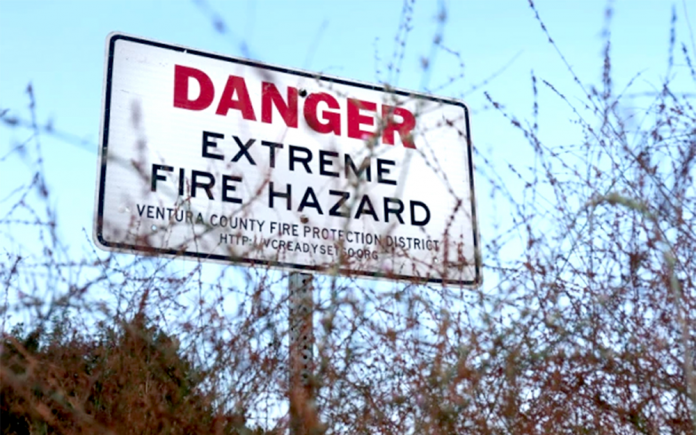
By Fire Chief Sam DiGiovanna
Fire season is year-round; however, this is the first week of fall, and with it comes Santa Ana winds. These typically brings triple-digit temperatures, low humidity and gusty winds increasing our high fire danger and red flag warnings.
What is a Santa Ana?
According to the California-Nevada Climate Applications Program (CNAP), Santa Ana is a “dry, sometimes hot and dusty wind in southwestern California that blows westward through the canyons toward the coastal areas.” Santa Ana winds can occur during fall, winter, and spring, but they tend to peak during October through December.
I am an amateur at this, so let me play meteorologist for one minute. The Great Basin includes most of Nevada, half of Utah, and sections of Idaho, Wyoming, Oregon, and California. Sometimes, cold air from the north becomes trapped in the Great Basin, caught between the Rockies and the Sierras/Southern California coastal range. As CNAP notes, this cold air mass is characterized by unusually high pressure near the land surface. When that pressure gets high enough to exceed the pressure along the California coast, the Santa Ana winds develop. As those winds move from higher to lower elevations, they become dramatically warmer and dryer. And as they move through narrow mountain passes, they pick up lots of speed.
As firefighters, we dread Santa Ana’s, and no – not just because they can irritate our allergies or bring on dry skin. The winds do not cause wildfires; people, accidents, vehicles, and disasters both natural and man-made do.
The Santa Ana’s have a particularly devastating history of fanning the flames, creating some of the largest and most destructive fire events in Southern California. In fact, they are sometimes known as the “devil winds.”
But it is not just a Southern California problem. Diablos and Sundowners occur in Central and Northern California. When large wildfires strike, many resources and personnel are called from throughout California and even out of state. California has one of the most efficient mutual aid systems in the country. When multiple fires occur, it stretches our resources.
Regardless of where you live, wildfires impact everyone. Resources are dispatched from every city/county in the state. Resources get stretched thin. Air quality is affected, highways get closed, school classes get cancelled, utilities are interrupted, and it costs taxpayers millions of dollars to fight these fires.
Here are some tools to help you prepare you:
Ready for wildfire: https://lnkd.in/gH8FJYtH
Evacuation tips: https://lnkd.in/gB-H5Qpm
Power outages: https://www.sce.com/outage-center/preparing-for-outages and a map where power outages may be occurring: https://poweroutage.us/area/state/california
Wildfire and air quality: https://lnkd.in/g8Tnweke
Get prepared and be safe!










































